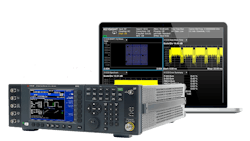Enabling the next leap forward in electronic design (.PDF Download)
In this age of engineering marvels, technological advancement is hard to miss. Horse-drawn carriages have given way to autonomous driving, landlines have been replaced by smartphones, and the list goes on. Throughout history, as technology has advanced, the design process has also had to advance to keep pace and support new development efforts. Proof of that fact is everywhere.
For example, before the advent of electronic design automation (EDA) software, electrical engineers designed with lightboards and stencils, similar to the process used by mechanical and architectural engineers. By the 1970s, the circuitry and overall size of circuit boards began to shrink. During this time, development for the first “place and route” software tools occurred. These tools consisted of two steps: placing all electronic components, circuitry, and logic elements and routing all wires needed to connect the placed components. With this advance, designers gained the ability to graphically place components and wires on a board with greater accuracy and precision.
